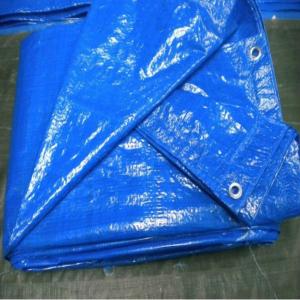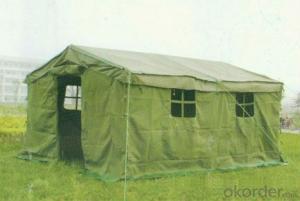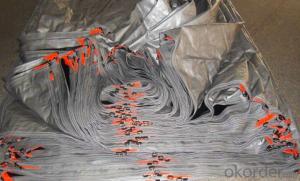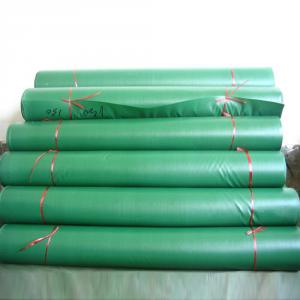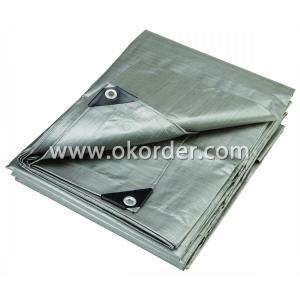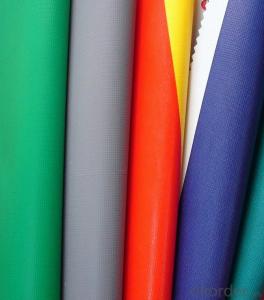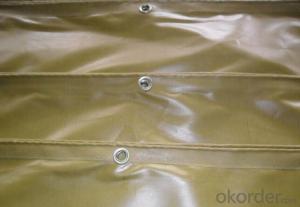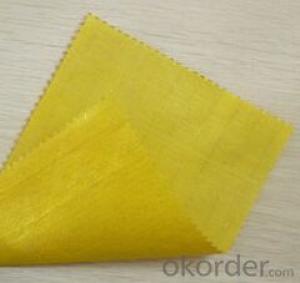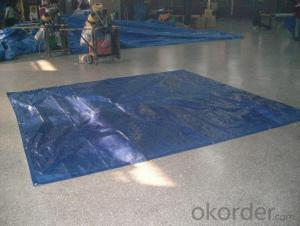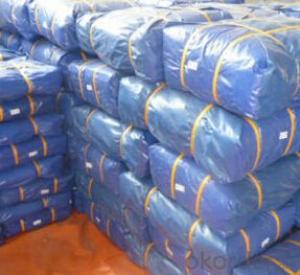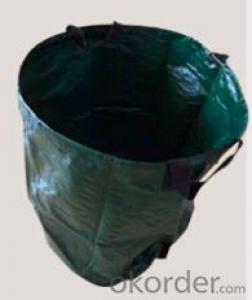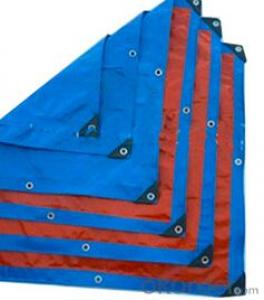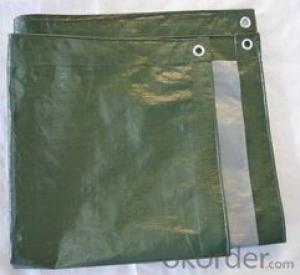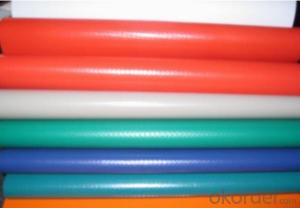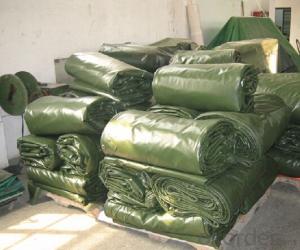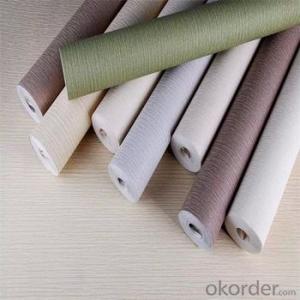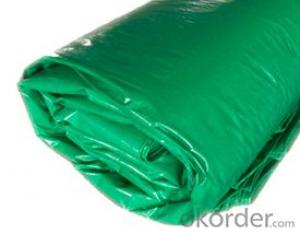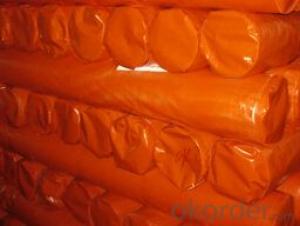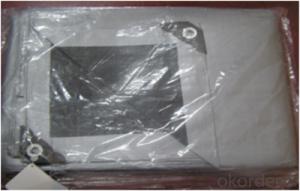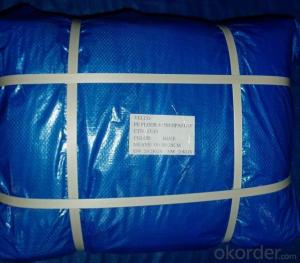Striped Tarpaulin
Striped Tarpaulin Related Searches
Silver TarpaulinHot Searches
Tanque De Geomembrana Tanques De Geomembrana Tanques De Geomembrana PreciosStriped Tarpaulin Supplier & Manufacturer from China
Okorder.com is a professional Striped Tarpaulin supplier & manufacturer, offers integrated one-stop services including real-time quoting and online cargo tracking. We are funded by CNBM Group, a Fortune 500 enterprise and the largest Striped Tarpaulin firm in China.Hot Products
FAQ
- Businesses can ensure the authenticity and traceability of stainless steel scrap by implementing a robust set of practices and procedures. Here are some key steps they can take: 1. Source from reputable suppliers: Businesses should establish relationships with trusted suppliers who adhere to strict quality control and ethical standards. Conducting due diligence on suppliers' reputation, certifications, and track record can help ensure the authenticity and traceability of stainless steel scrap. 2. Implement a comprehensive documentation system: Maintaining proper documentation is crucial for traceability. This includes recording information such as the origin of the stainless steel scrap, its composition, and any relevant certifications or test reports. This document trail can help verify the authenticity of the scrap and provide a clear traceability history. 3. Utilize reliable testing and inspection methods: Regular testing and inspection of the stainless steel scrap can help verify its authenticity and quality. Businesses should employ reliable testing techniques, such as chemical analysis and mechanical testing, to ensure that the scrap meets the required standards. 4. Embrace advanced technologies: Utilizing modern technologies like blockchain can enhance the traceability of stainless steel scrap. By creating a decentralized and immutable ledger, businesses can securely record every transaction and movement of the scrap, ensuring transparency and preventing tampering. 5. Conduct periodic audits: Regular audits of the supply chain can help identify any potential gaps or weaknesses in the traceability system. Independent third-party audits can provide an extra layer of assurance and help businesses maintain the integrity of their stainless steel scrap. 6. Collaborate with industry associations and initiatives: Participating in industry associations or initiatives focused on responsible sourcing and traceability can help businesses stay updated on best practices and industry standards. Collaboration with these organizations can also provide access to tools and resources that enhance the authenticity and traceability of stainless steel scrap. By implementing these measures, businesses can strengthen the authenticity and traceability of stainless steel scrap, ensuring that it meets the required standards and ethical sourcing requirements.
- Stainless steel scrap has excellent heat resistance properties, making it a highly sought-after material in various industries. Due to its high chromium content, stainless steel scrap exhibits exceptional resistance to oxidation and corrosion at high temperatures. This makes it suitable for applications that involve exposure to heat, such as in furnaces, heat exchangers, and industrial ovens. Stainless steel scrap can withstand elevated temperatures without losing its structural integrity, which is an essential characteristic for many manufacturing processes. It retains its strength, shape, and durability even when subjected to extreme heat conditions. This heat resistance property is particularly advantageous in industries such as aerospace, automotive, and construction, where materials need to withstand intense heat without deforming or deteriorating. Furthermore, stainless steel scrap has low thermal conductivity, meaning it does not readily transfer heat. This property allows it to serve as an effective thermal insulator, protecting surrounding materials from excessive heat damage. Stainless steel scrap is commonly used in the production of heat-resistant components, such as exhaust systems, boiler tubes, and heat shields. Overall, the heat resistance properties of stainless steel scrap make it a reliable and versatile material for various applications requiring durability and stability under high-temperature conditions.
- Stainless steel scrap is commonly traded internationally through various processes and channels. The export and import of this scrap require multiple steps and parties to ensure adherence to international trade regulations and standards. When exporting stainless steel scrap, the process typically begins with the collection and sorting of the scrap by scrap metal dealers or recycling companies. These entities usually purchase the scrap from different sources, such as manufacturing plants, construction sites, or individuals. Once collected and sorted, the scrap is further processed to eliminate impurities or contaminants. This can involve shredding, cutting, or melting the stainless steel scrap into smaller pieces or compacted forms, depending on the importing country's requirements or the buyer's preferences. After the processing stage, the stainless steel scrap is usually packed into containers or loaded onto bulk carriers for transportation. Exporters must comply with relevant shipping regulations and standards, ensuring proper packaging, labeling, and documentation. To simplify the export process, exporters often collaborate with freight forwarders or shipping agents who manage the logistics and arrange transportation for the stainless steel scrap. These intermediaries assist with obtaining necessary export permits, customs clearance, and selecting suitable shipping methods, such as sea freight or air cargo. On the import side, buyers or importers of stainless steel scrap typically identify potential suppliers through online platforms, trade directories, or industry connections. Once a suitable supplier is found, the importer negotiates the purchase terms, including price, quantity, and delivery terms. Once an agreement is reached, the importer arranges for the transportation of the stainless steel scrap from the exporting country to the importing country. This involves working with freight forwarders or shipping agents to handle customs clearance, import permits, and logistics associated with the arrival of the stainless steel scrap. Upon arrival, the imported stainless steel scrap may undergo further inspections and quality checks to ensure it meets the required specifications and standards. The importer then typically processes the scrap for further industrial use or resale to domestic buyers. Overall, the export and import of stainless steel scrap involve a complex network of stakeholders, including scrap dealers, recycling companies, freight forwarders, shipping agents, and customs authorities. Compliance with international trade regulations, proper documentation, and efficient logistics management are crucial for facilitating the smooth flow of stainless steel scrap across borders.
- Stainless steel scrap can be used in the aerospace industry for various applications such as manufacturing aircraft components, structural parts, and engine parts. It can be recycled and repurposed to produce new stainless steel alloys that possess high strength, corrosion resistance, and heat resistance characteristics required in aerospace engineering.
- There are various potential applications for stainless steel scrap in the automotive battery industry. One potential application involves using it to manufacture battery casings or containers. Stainless steel is an ideal material for this purpose due to its resistance to corrosion and durability. It effectively protects batteries from moisture and chemicals. By utilizing stainless steel scrap, the industry can reduce costs and environmental impact by reusing materials rather than producing new ones. Another potential use for stainless steel scrap in the automotive battery industry is in the production of battery terminals or connectors. Stainless steel has excellent electrical conductivity and low resistance, making it suitable for ensuring efficient power transfer in batteries. By utilizing stainless steel scrap, the industry can conserve resources and minimize waste by recycling existing materials instead of relying solely on new production. Stainless steel scrap can also be used in the manufacturing of battery trays or holders. These components securely hold batteries in place within vehicles. Stainless steel, with its strength and corrosion resistance, provides the necessary support and protection for batteries, ensuring their longevity and safety. Moreover, stainless steel scrap can be repurposed for various small components within the battery system, such as brackets, clips, or fasteners. These components are vital for the structural integrity and assembly of the battery system. By utilizing stainless steel scrap, the automotive battery industry can reduce costs and environmental impact by reusing materials rather than manufacturing brand new components. In conclusion, the automotive battery industry has numerous potential uses for stainless steel scrap. From battery casings to terminals, trays, and small components, stainless steel scrap offers durability, corrosion resistance, and cost-effective solutions. By incorporating recycled materials, the industry can contribute to sustainability efforts and reduce its carbon footprint while maintaining high-quality battery production.
- By enhancing the efficiency and accuracy of the sorting process, advanced sorting technologies have the ability to significantly improve the quality of stainless steel scrap. These technologies utilize sophisticated sensors, cameras, and artificial intelligence algorithms to identify and separate various types of stainless steel scrap based on their composition and characteristics. One method by which these advanced sorting technologies enhance the quality of stainless steel scrap is by effectively segregating different grades of stainless steel. Each grade of stainless steel contains different levels of alloying elements, such as chromium and nickel, which impact their corrosion resistance, strength, and other properties. Through precise identification and separation of different grades, advanced sorting technologies facilitate more accurate recycling and reprocessing, resulting in higher-quality end products. Moreover, these technologies are capable of detecting and eliminating impurities and contaminants from the stainless steel scrap. This is particularly important as contaminants like non-ferrous metals, plastics, and other materials can significantly diminish the quality of the final stainless steel product. By utilizing advanced sensors and cameras, the sorting technologies can identify and separate these impurities, guaranteeing that only clean and pure stainless steel undergoes further processing. Furthermore, advanced sorting technologies can optimize the recovery of valuable elements from stainless steel scrap. For instance, stainless steel contains valuable metals like chromium and nickel, which can be extracted and reused. Through accurate identification and sorting of stainless steel scrap based on its metal content, these technologies enable efficient recovery of these valuable elements, reducing the reliance on primary metal extraction and promoting sustainability. Overall, advanced sorting technologies play a vital role in enhancing the quality of stainless steel scrap by accurately identifying different grades, removing impurities, and maximizing the recovery of valuable elements. These technologies not only improve the efficiency of the recycling process but also contribute to the production of high-quality stainless steel products, thereby promoting resource conservation and environmental sustainability.
- Stainless steel scrap can be utilized in various ways within the automotive industry. One primary application is in the production of automotive parts and components. Stainless steel scrap can be recycled and transformed into new parts such as exhaust systems, mufflers, pipes, catalytic converters, brackets, and various other components. The corrosion-resistant properties of stainless steel make it an ideal material for these applications, as it can withstand harsh environmental conditions and ensure long-lasting durability. Additionally, stainless steel scrap can be used in the manufacturing of automotive body panels, trims, and decorative features. The aesthetic appeal and sleek look of stainless steel can enhance the overall design of the vehicle, making it more visually appealing to customers. Moreover, stainless steel scrap can also be utilized in the fabrication of suspension components, engine parts, and fasteners, where its strength and resistance to heat and pressure are crucial. Furthermore, stainless steel scrap can be employed in the production of automotive tools and equipment. These tools include wrenches, sockets, screwdrivers, and other hand tools, as well as equipment used for repair and maintenance purposes. The high strength and resistance to wear and tear of stainless steel make it an excellent choice for such applications, ensuring the longevity and reliability of these tools. In summary, the utilization of stainless steel scrap in the automotive industry is extensive and diverse. It enables the production of durable and corrosion-resistant parts, enhances the visual appeal of vehicles, and contributes to the creation of reliable tools and equipment. By recycling stainless steel scrap, the automotive industry can reduce waste, conserve resources, and contribute to a more sustainable manufacturing process.
- Using stainless steel scrap in the marine industry offers several potential advantages. Firstly, it presents a cost-effective alternative to using new stainless steel materials. By utilizing scrap, marine companies can significantly reduce their production costs, as scrap is often available at a lower price compared to new stainless steel. This cost savings can be particularly beneficial for smaller businesses or those with limited budgets. Secondly, the use of stainless steel scrap promotes sustainability and environmental responsibility. By reusing scrap materials, companies minimize the need for new stainless steel production, thereby reducing the extraction of raw materials and the energy consumption associated with manufacturing processes. This contributes to a more circular economy and a reduced carbon footprint. Another benefit is the abundant availability of stainless steel scrap. With the growing demand for stainless steel in the marine industry, utilizing scrap materials ensures a consistent supply without placing excessive strain on natural resources. This availability also helps maintain a stable market for stainless steel, preventing price fluctuations and ensuring a reliable source of materials for marine projects. Furthermore, stainless steel scrap can possess similar or even superior properties compared to new stainless steel. By employing appropriate processing and quality control measures, scrap materials can be transformed into components that meet the required strength, durability, corrosion resistance, and other specifications needed in the marine industry. This allows for the use of recycled stainless steel without compromising performance or safety. Lastly, incorporating stainless steel scrap in the marine industry can enhance its reputation and appeal to environmentally-conscious customers. As sustainability becomes an increasingly important consideration for consumers, companies that prioritize the use of recycled materials can distinguish themselves and attract customers who value eco-friendly practices. In conclusion, the use of stainless steel scrap in the marine industry offers potential benefits such as cost savings, environmental sustainability, consistent availability, comparable quality, and improved market positioning. By embracing the use of recycled materials, marine companies can align themselves with both economic and environmental goals, contributing to a more sustainable and responsible industry.





